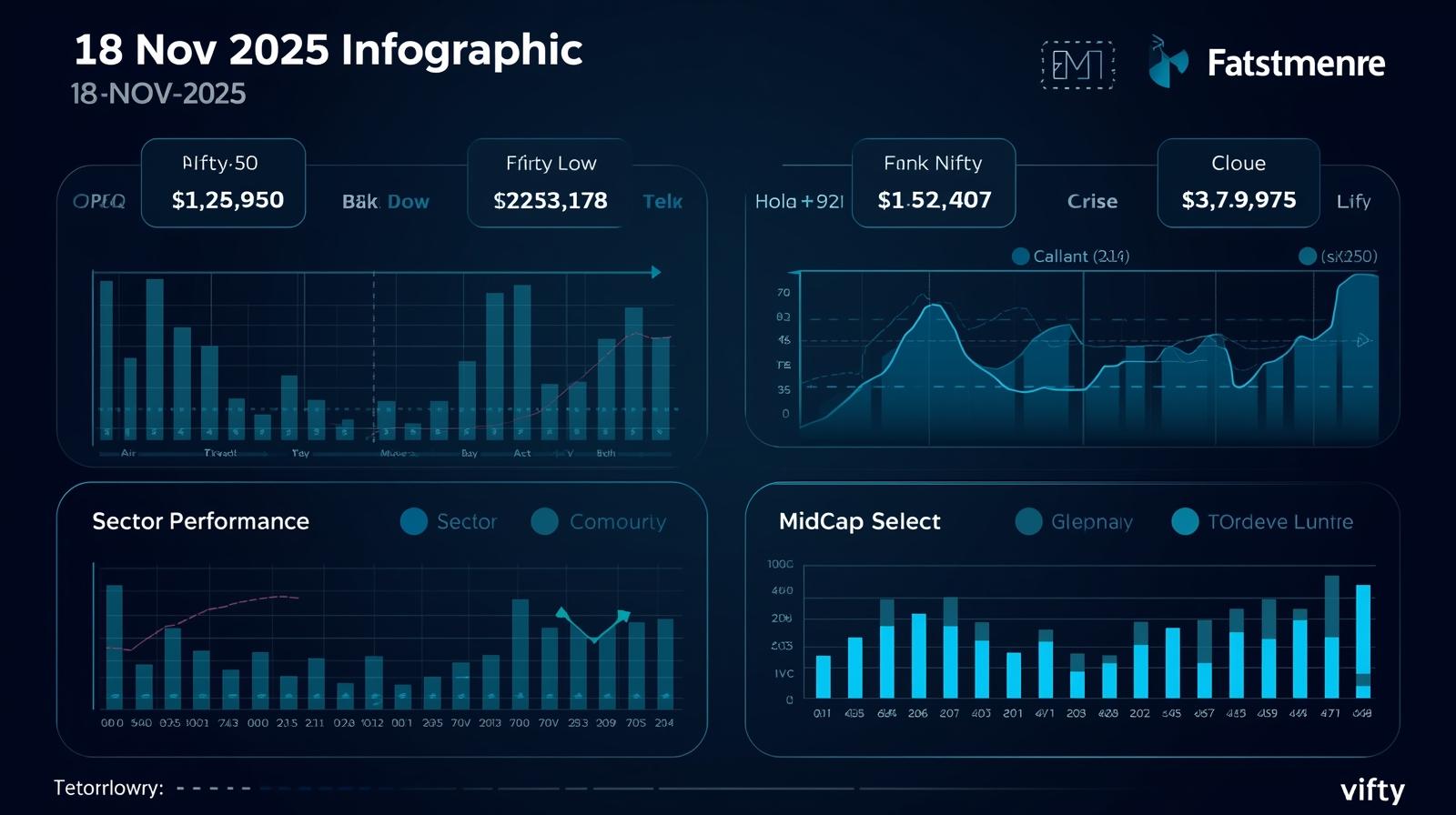India’s Goods and Services Tax (GST) reform has always been a politically and economically significant subject. Since its launch in July 2017, GST was pitched as a “One Nation, One Tax” initiative aimed at unifying India’s complex indirect tax regime. But over the years, multiple slab structures, compliance hurdles, and frequent changes created confusion for both businesses and consumers.
On August 21, 2025, the Group of Ministers (GoM) made a historic recommendation: scrapping the 12% and 28% slabs and moving towards a simplified two-slab GST structure of 5% and 18%, with a 40% rate reserved for sin goods and luxury products.
This reform has the potential to redefine India’s taxation ecosystem, influence consumer demand, impact state revenues, and even shape electoral politics. Let’s break down the latest developments, impacts, and what retail traders, investors, and businesses must watch out for.
Key Highlights of the GST Reform
-
Two Slabs Instead of Four
-
Existing slabs: 5%, 12%, 18%, 28%
-
Proposed slabs: 5% & 18%, with 40% for sin/luxury goods.
-
-
Shift in Categories
-
Nearly 99% of goods under 12% will move to 5%.
-
Around 90% of goods under 28% will shift to 18%.
-
-
Insurance Relief
-
Proposal to exempt life and health insurance premiums (currently taxed at 18%).
-
-
Economic Impact (as per SBI Research)
-
Consumption boost: ₹1.98 lakh crore.
-
Revenue loss: ₹85,000 crore annually.
-
-
States vs Centre
-
States fear loss of fiscal autonomy & revenue shortfall.
-
Demanding compensation mechanisms.
-
-
Timeline
-
Recommendations go to GST Council in September 2025.
-
Implementation likely before Diwali 2025 to boost consumption.
-
Why the Reform Now?
-
Complexity of Current System: The 4-slab model was meant to balance affordability with revenue generation but instead created confusion.
-
Political Timing: With elections on the horizon, the Centre wants to ease consumer burden and create a “feel-good factor.”
-
Economic Strategy: GST simplification is expected to stimulate demand at a time when India is battling global trade tensions and domestic slowdown.
-
Industry Push: Textile, auto, and MSME sectors have long demanded uniform lower GST rates to reduce compliance and increase affordability.
Economic Impact: Who Gains and Who Loses?
✅ Winners
-
Consumers: Cheaper goods in several categories including garments, footwear, home appliances, and electronics.
-
Insurance Policyholders: Health and life insurance premiums may become more affordable without GST.
-
MSMEs & Retailers: Reduced compliance costs and higher demand.
-
Stock Market: Insurance and consumer goods stocks have already reacted positively.
❌ Losers
-
Government Revenues: ₹85,000 crore annual shortfall (SBI estimate).
-
States: High dependence on GST revenue could create fiscal stress.
-
Luxury Segment: 40% GST rate may discourage premium consumption.
Political & Federal Challenges
States’ Concerns
Many states have already flagged issues:
-
Revenue Compensation: Without 12% and 28% slabs, states expect lower collections.
-
Fiscal Autonomy: Some states fear dependence on central grants.
-
Implementation Risks: Transitioning tax systems before Diwali may overwhelm compliance frameworks.
Centre’s Position
-
Argues that boosted consumption will offset part of the revenue loss.
-
Believes simplified GST will increase compliance and widen tax base.
-
Likely to offer short-term compensation packages to states.
Impact on Sectors
1. Insurance
-
Current GST on premiums: 18%.
-
Proposed: Zero GST on life & health insurance.
-
Estimated revenue loss: ₹9,700 crore.
-
Impact: Boosts insurance penetration, makes policies affordable for middle class.
2. Textiles & Garments
-
Industry in Ludhiana & Surat welcomes uniform 5% GST.
-
Expected rise in affordable fashion & exports.
3. Automobile & Electronics
-
Moving from 28% to 18% could make cars, two-wheelers, and gadgets cheaper.
-
Boosts demand in festive season.
4. FMCG Sector
-
Large portfolio items shifting from 12% to 5%.
-
FMCG stocks likely to outperform in short-term.
5. Luxury Goods & Tobacco
-
40% GST + cess keeps premium items costlier.
-
Aimed at discouraging conspicuous consumption.
Market Sentiment
-
Stock Markets Reacted Positively
-
Nifty FMCG, Auto, and Insurance indices saw upward momentum.
-
Traders expect a Diwali rally driven by GST cut benefits.
-
-
Banking Sector View
-
SBI Research: Boost to consumption but with a fiscal cost.
-
Analysts see short-term rally, long-term fiscal risk.
-
-
Foreign Investors
-
Likely to see GST reforms as a sign of pro-consumer policy.
-
Could increase FDI inflows in manufacturing and retail.
-
Consumer Side: What Gets Cheaper?
| Current GST | Proposed GST | Example Items |
|---|---|---|
| 12% → 5% | Fans, water heaters, processed food, garments | |
| 28% → 18% | Two-wheelers, small cars, air conditioners, refrigerators | |
| 18% → 0% (proposed) | Health insurance, life insurance | |
| 28% + cess → 40% | Tobacco, luxury cars, premium alcohol |
Global Context
India is aligning with global best practices:
-
Two-rate systems are common in developed economies.
-
Simplified taxation attracts global investors.
-
Helps India compete with China, Vietnam, and ASEAN in manufacturing.
Risks & Challenges
-
Revenue Shortfall: ₹85,000 crore loss could widen fiscal deficit.
-
State-Centre Tensions: Demands for compensation may delay implementation.
-
Inflationary Concerns: While many goods become cheaper, states may raise petrol/diesel VAT to offset losses.
-
Execution Timeline: Businesses need clarity before Diwali sales season.
What Traders & Retail Investors Should Do
-
FMCG & Consumer Durables Stocks: Likely short-term winners.
-
Insurance Companies: Positive impact if GST exemption passes.
-
Auto Sector: Demand revival expected in festive season.
-
Luxury Stocks: May face pressure due to 40% GST.
-
Banking Sector: Watch for fiscal implications; PSU banks may face indirect risks.
👉 Traders should book profits smartly during festive rallies but stay alert for long-term fiscal concerns.
Future Outlook
-
Short-Term: Boost in consumption, stock market optimism, festive cheer.
-
Medium-Term: Fiscal pressures may mount on Centre and states.
-
Long-Term: India moves closer to true GST model with higher compliance, simplicity, and improved competitiveness.
If the GST Council passes this reform in September, India may witness one of the biggest indirect tax revolutions since 2017.
Conclusion
The latest GST reforms mark a transformational shift in India’s taxation policy. By simplifying the structure into two slabs, the government aims to reduce consumer burden, stimulate demand, and attract investments. While the move is celebrated by consumers, industry, and markets, states remain cautious about revenue losses.
The success of GST 2.0 will depend on careful balancing—ensuring consumers benefit without jeopardizing fiscal health. For now, India is gearing up for a festive season that could be cheaper, brighter, and more business-friendly than ever before.
 Stock Market Disclaimer
Stock Market Disclaimer
- Disclaimer: This post is for informational and educational purposes only and does not constitute financial advice or a recommendation to buy/sell any stock or share. Investing in the stock market involves risk. Past performance is not indicative of future results. Always conduct your own research or consult a licensed financial advisor before making investment decisions.
- The information provided on this platform is for educational and informational purposes only. It should not be considered as investment advice, stock recommendations, or financial guidance.
Stock Market Investments
- Investing in equities, derivatives, mutual funds, and other financial instruments involves market risks, volatility, and the possibility of capital loss.
- Past performance of stocks or indices is not indicative of future returns.
- Always conduct your own research or consult a SEBI-registered financial advisor before making investment decisions.
IPO (Initial Public Offerings)
- IPO details, issue size, subscription data, and allotment status shared here are based on publicly available information from company filings, stock exchanges, and merchant bankers.
- Investing in IPOs carries risks including listing volatility, business uncertainties, and sector performance dependency.
- Neither acceptance of applications nor allotment guarantees profits. Investors should evaluate their risk appetite before subscribing.
GMP (Grey Market Premium)
- Grey Market Premium (GMP) is an unofficial and unregulated indicator of expected IPO listing price.
- GMP data is collected from market observers and informal trading circles; it does not have any legal or SEBI recognition.
- GMP values are highly speculative and may differ significantly from actual listing prices. Investors should not rely solely on GMP while taking investment decisions.
General Advisory
- We do not provide any buy/sell/hold recommendations.
- Readers and investors are solely responsible for their investment actions and decisions.
- This platform, its authors, and affiliates are not liable for any direct or indirect financial loss arising from the use of this information.
Always invest responsibly and diversify your portfolio.



